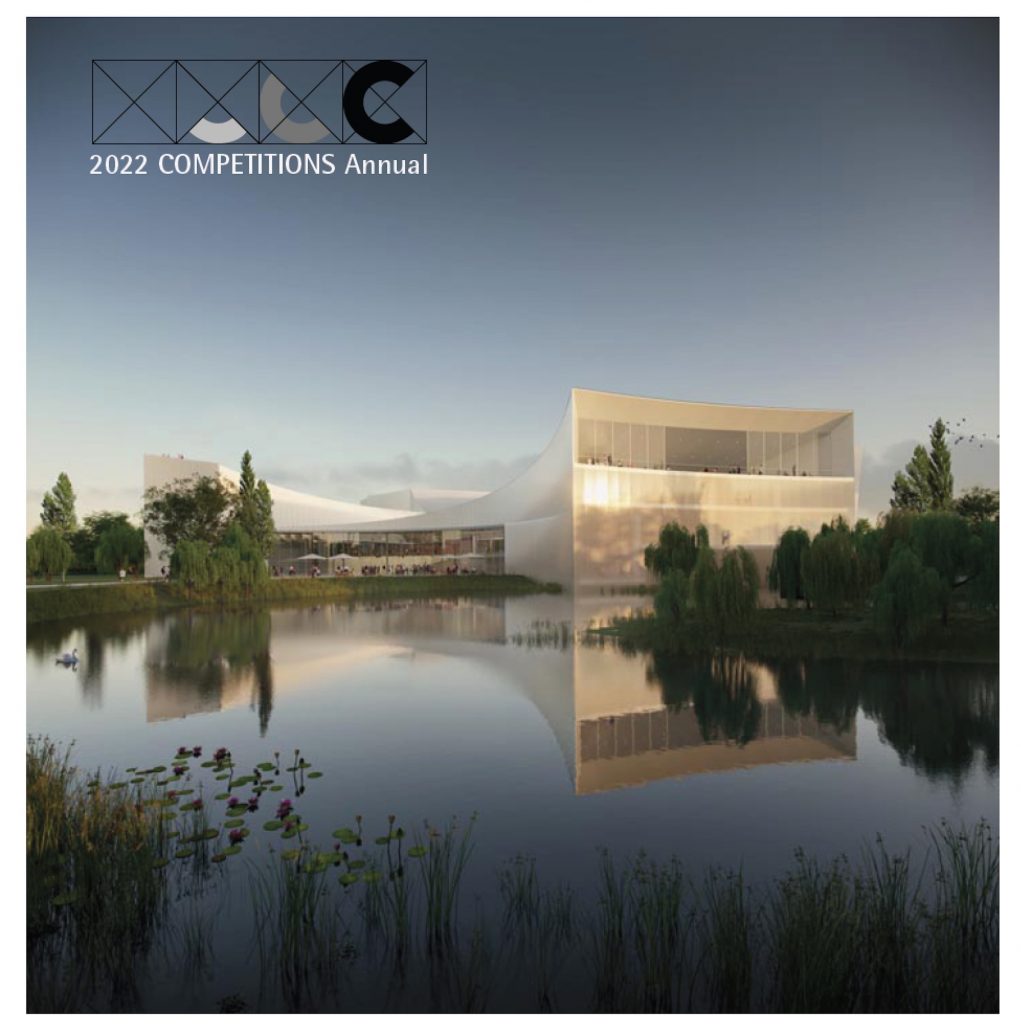A Design Team Search for the Pierscape at Navy Pier RFQ
Sponsor: Navy Pier, Inc. Type of competition: RFQ, three-stage Language: English Location: Chicago Eligibility: Qualified design teams Registration Fee: None Jury: CHAIRMAN Ms. Sarah Garvey – Retired, The Boeing Company John G. Shedd Aquarium
VICE-CHAIRMAN Mr. Pat Daly – The Daly Group LLC
SECRETARY/TREASURER Ms. Andrea Zopp – The Chicago Urban League
EX-OFFICIO Mr. David Mosena – The Museum of Science and Industry
EX-OFFICIO Mr. James R. Reilly – Metropolitan Pier & Exposition Authority Mr. Marc Brooks – MKMB Corporation
Ms. Nora Daley Conroy – Chicago Metropolis 2020
Mr. Roberto Herencia – BXM Holdings Inc.
Ms. Donna LaPietra – Kurtis Productions, LTD.
Mr. Terry Peterson – The Chicago Transit Authority
Mr. John Schmidt – Mayer Brown LLP
Mr. Kurt Summers – The Cook County Board of Commissioners
Mr. Kelly R. Welsh – The Northern Trust Company
Ms. Marilynn K. Gardner – CEO and General Manager Awards: Design teams invited to Phase III (5 teams) will each receive a stipend of $50,000 Timeline: Phase I: 15 September 2011 – Online Pre-submittal meeting 20 September 2011 – Notification of Intent to Participate due 22 September 2011 – Last day for written questions 29 September 2011 – Last response date for answers 06 October 2011 – Design team portfolio and qualifications due 20 October 2011 – Shortlisted design teams notified (10 teams selected)
Phase II: 10 November 2011 – Design team organization and approach due Phase III: 24 January 2012 – Design proposals and fee estimates due Design challenge: Navy Pier provides the opportunity for a Design Team to have a profound impact on one of the most important and visible public places in Chicago. The Pier is the most popular attraction in Chicago, drawing nearly nine million visitors annually. Design Teams interested in participating in this search process should be comprised of representatives from landscape architecture, architecture, urban design, communication and graphic design, lighting design, art curation, engineering, and other relevant disciplines. These self-organized teams will be asked to submit creative solutions for the Pier’s public realm. The search will culminate with the selection in early 2012 of designers to work with Navy Pier to implement a new design for the Pierscape.
The Pierscape Design Team search is an important part of a larger Navy Pier initiative entitled The Centennial Vision, the goal of which is to make Navy Pier a truly iconic and world-class destination. As the Pier approaches its centennial, now is the time to look at future possibilities for the Pier. It is important to preserve the heritage of the “People’s Pier” while refreshing and improving its public spaces. We are confident that the framework that we have put together is visionary, practical, and achievable. The Pierscape design should follow suit so that it is inspirational, feasible, and gets built.
Submission requirements: Unless noted otherwise, all material submitted in response to this RFP should be done as 8½” X 11” PDF’s uploaded digitally to the Pierscape RFP website, navypiervision.com/rfp. Design Teams should provide a thorough submittal using the guidelines presented herein. Submittals should be straightforward and concise. |
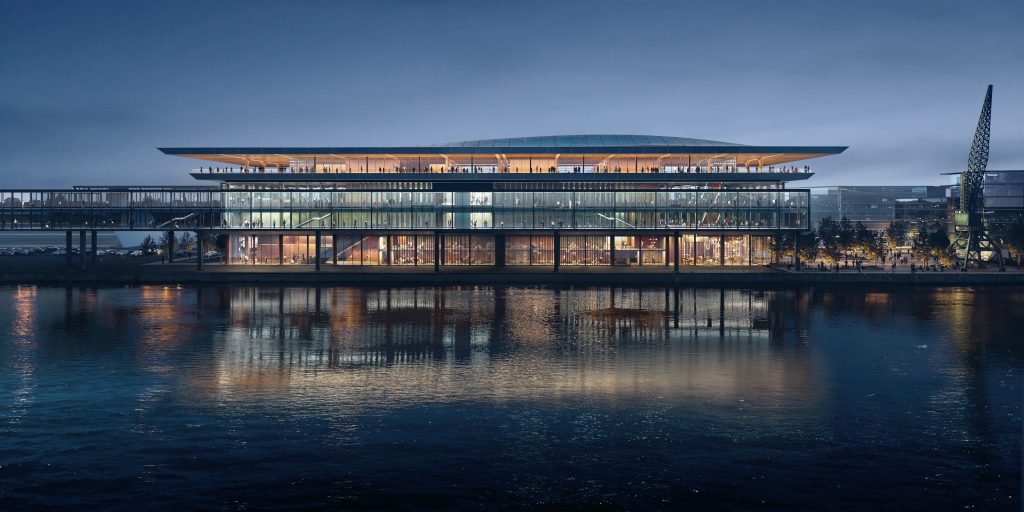
1st Place: Zaha Hadid Architects – night view from river – Render by Negativ
Arriving to board a ferry boat or cruise ship used to be a rather mundane experience. If you had luggage, you might be able to drop it off upon boarding, assuming that the boarding operation was sophisticated enough. In any case, the arrival experience was nothing to look forward to. I recall boarding the SS United States for a trip to Europe in the late 1950s. Arriving at the pier in New York, the only thought any traveler had was to board that ocean liner as soon as possible, find one’s cabin, and start exploring. If you were in New York City and arriving early, a nearby restaurant or cafe would be your best bet while passing time before boarding. Read more… Young Architects in Competitions When Competitions and a New Generation of Ideas Elevate Architectural Quality 
by Jean-Pierre Chupin and G. Stanley Collyer
published by Potential Architecture Books, Montreal, Canada 2020
271 illustrations in color and black & white
Available in PDF and eBook formats
ISBN 9781988962047
Wwhat do the Vietnam Memorial, the St. Louis Arch, and the Sydney Opera House have in common? These world renowned landmarks were all designed by architects under the age of 40, and in each case they were selected through open competitions. At their best, design competitions can provide a singular opportunity for young and unknown architects to make their mark on the built environment and launch productive, fruitful careers. But what happens when design competitions are engineered to favor the established and experienced practitioners from the very outset? This comprehensive new book written by Jean-Pierre Chupin (Canadian Competitions Catalogue) and Stanley Collyer (COMPETITIONS) highlights for the crucial role competitions have played in fostering the careers of young architects, and makes an argument against the trend of invited competitions and RFQs. The authors take an in-depth look at past competitions won by young architects and planners, and survey the state of competitions through the world on a region by region basis. The end result is a compelling argument for an inclusive approach to conducting international design competitions. Download Young Architects in Competitions for free at the following link: https://crc.umontreal.ca/en/publications-libre-acces/ 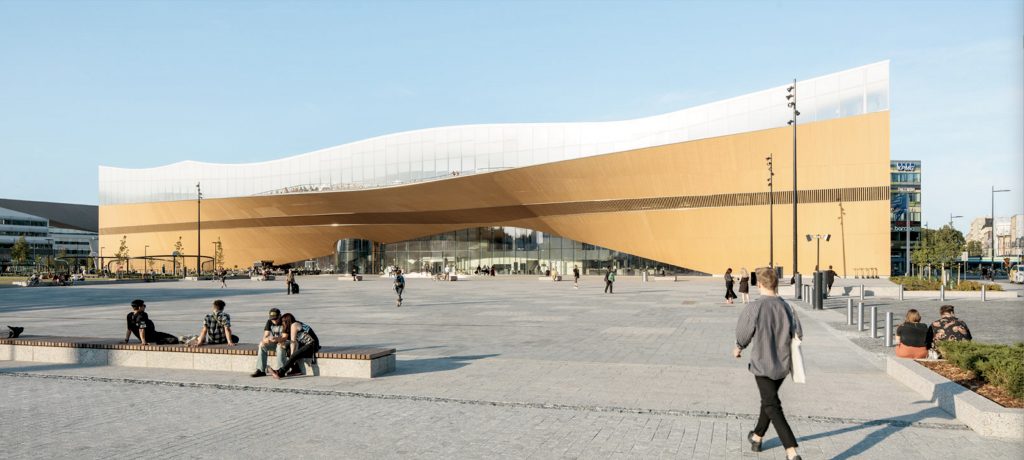
Helsinki Central Library, by ALA Architects (2012-2018)
The world has experienced a limited number of open competitions over the past three decades, but even with diminishing numbers, some stand out among projects in their categories that can’t be ignored for the high quality and degree of creativity they revealed. Included among those are several invited competitions that were extraordinary in their efforts to explore new avenues of institutional and museum design. Some might ask why the Vietnam Memorial is not mentioned here. Only included in our list are competitions that were covered by us, beginning in 1990 with COMPETITIONS magazine to the present day. As for what category a project under construction (Science Island), might belong to or fundraising still in progress (San Jose’s Urban Confluence or the Cold War Memorial competition, Wisconsin), we would classify the former as “built” and wait and see what happens with the latter—keeping our fingers crossed for a positive outcome. Read More… 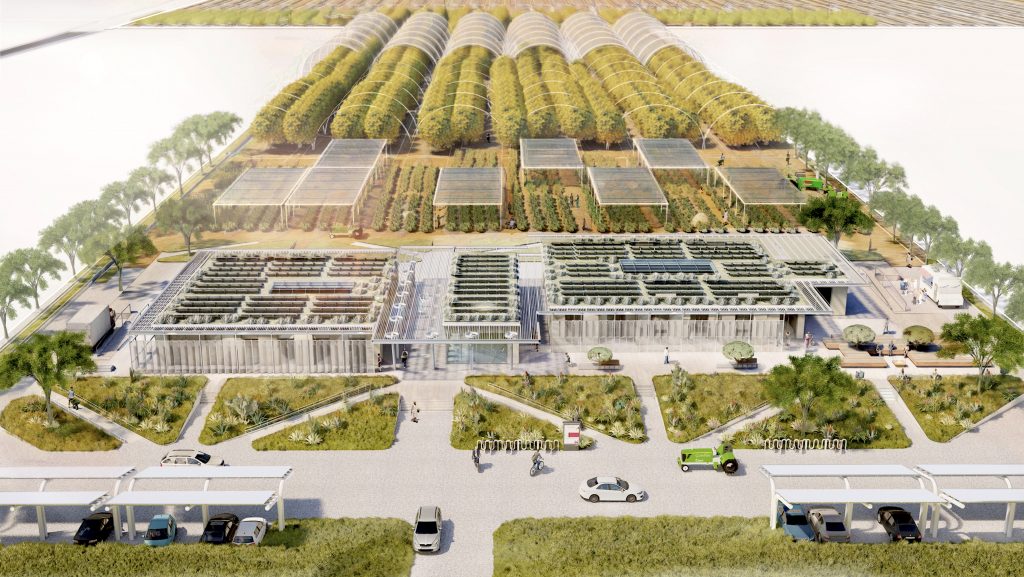
2023 Teaching and Innovation Farm Lab Graduate Student Honor Award by USC (aerial view)
Architecture at Zero competitions, which focus on the theme, Design Competition for Decarbonization, Equity and Resilience in California, have been supported by numerous California utilities such as Southern California Edison, PG&E, SoCAl Gas, etc., who have recognized the need for better climate solutions in that state as well as globally. Until recently, most of these competitions were based on an ideas only format, with few expectations that any of the winning designs would actually be realized. The anticipated realization of the 2022 and 2023 competitions suggests that some clients are taking these ideas seriously enough to go ahead with realization. Read more… 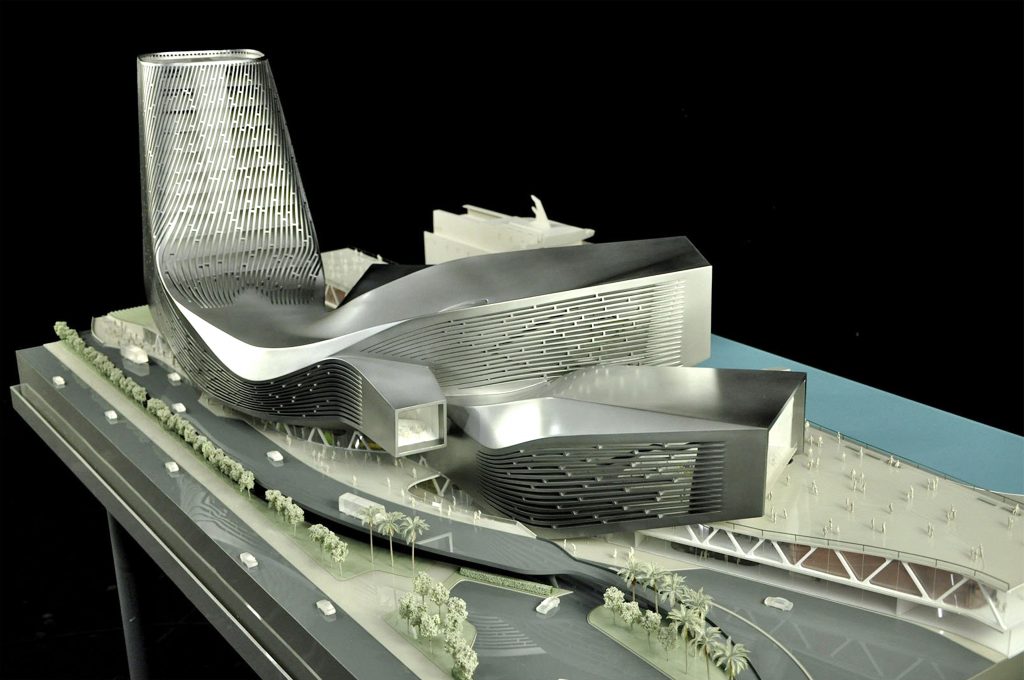
RUR model perspective – ©RUR
New Kaohsiung Port and Cruise Terminal, Taiwan (2011-2020)
Reiser+Umemoto RUR Architecture PC/ Jesse Reiser – U.S.A.
with
Fei & Cheng Associates/Philip T.C. Fei – R.O.C. (Tendener)
This was probably the last international open competition result that was built in Taiwan. A later competition for the Keelung Harbor Service Building Competition, won by Neil Denari of the U.S., the result of a shortlisting procedure, was not built. The fact that the project by RUR was eventually completed—the result of the RUR/Fei & Cheng’s winning entry there—certainly goes back to the collaborative role of those to firms in winning the 2008 Taipei Pop Music Center competition, a collaboration that should not be underestimated in setting the stage for this competition Read more… 
Winning entry ©Herzog de Meuron
In visiting any museum, one might wonder what important works of art are out of view in storage, possibly not considered high profile enough to see the light of day? In Korea, an answer to this question is in the making. It can come as no surprise that museums are running out of storage space. This is not just the case with long established “western” museums, but elsewhere throughout the world as well. In Seoul, South Korea, such an issue has been addressed by planning for a new kind of storage facility, the Seouipul Open Storage Museum. The new institution will house artworks and artifacts of three major museums in Seoul: the Seoul Museum of Modern Art, the Seoul Museum of History, and the Seoul Museum of Craft Art.
Read more… |



























